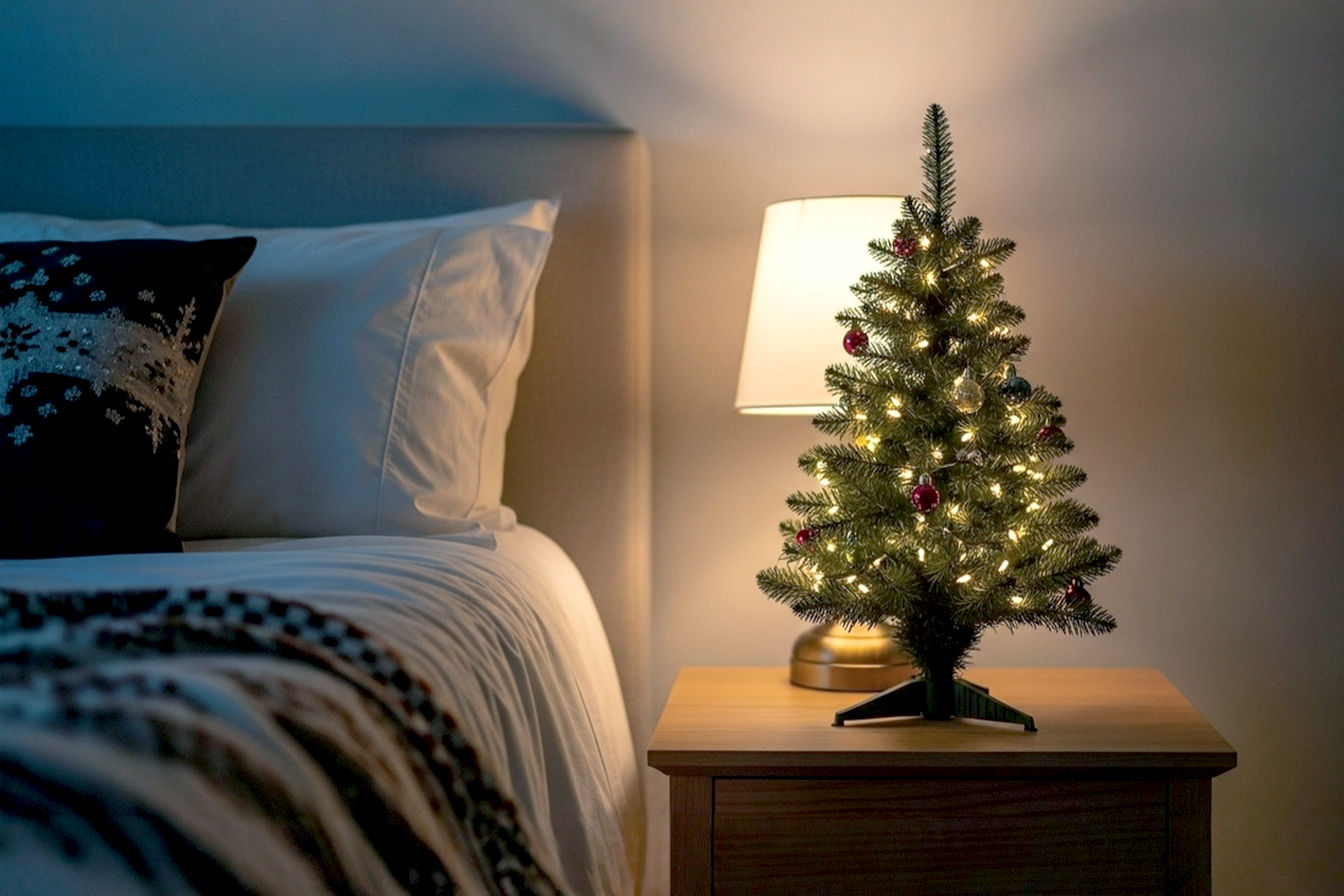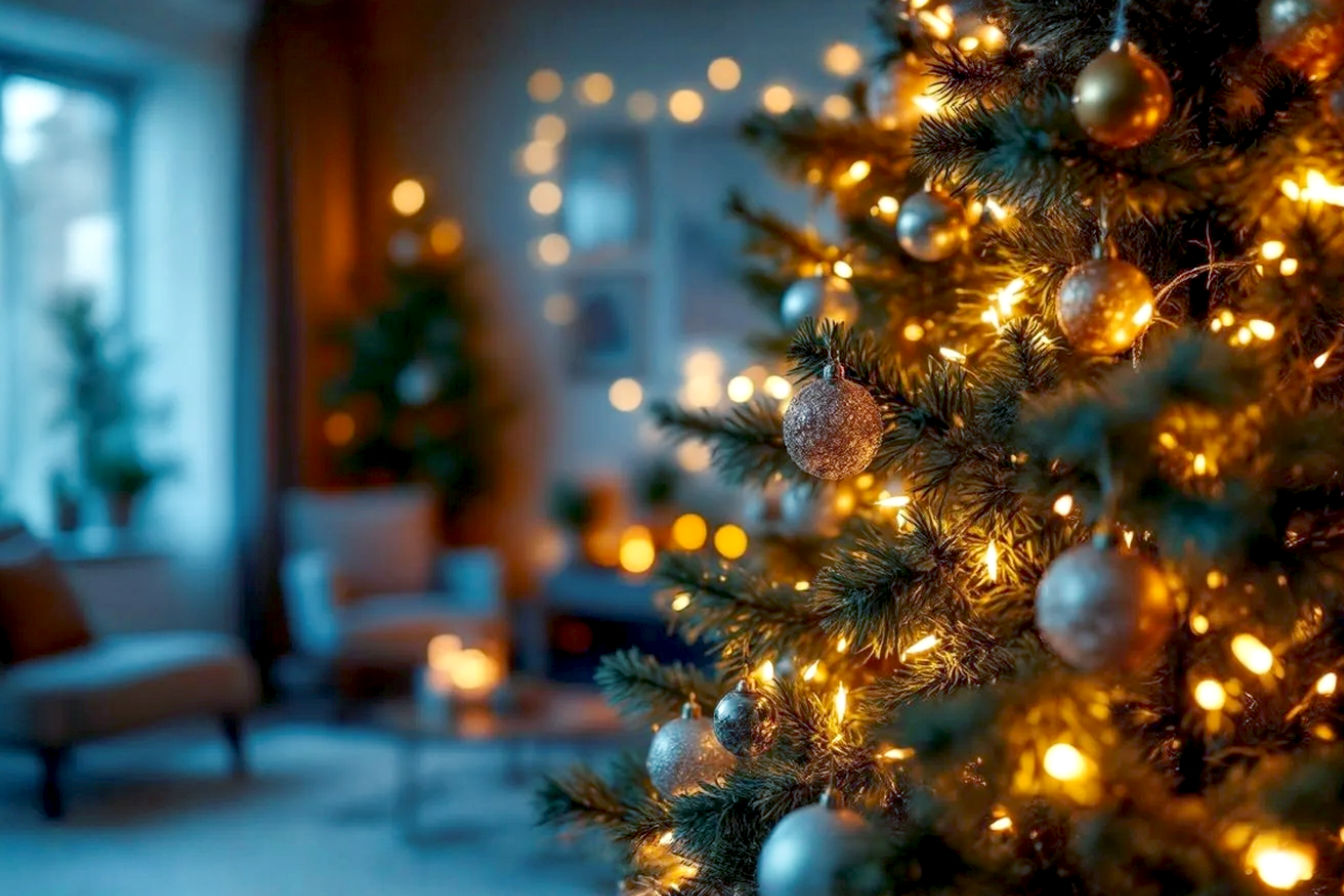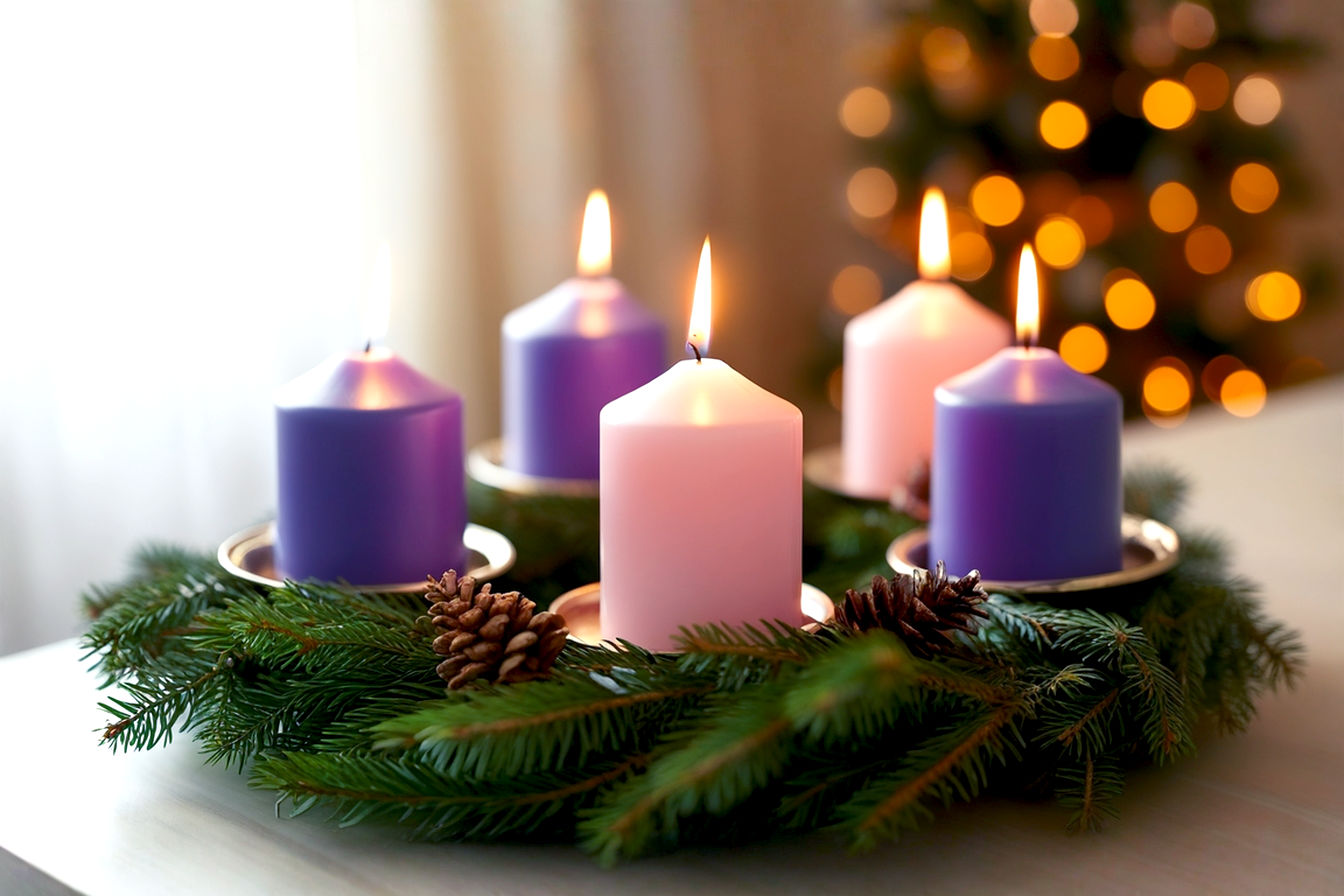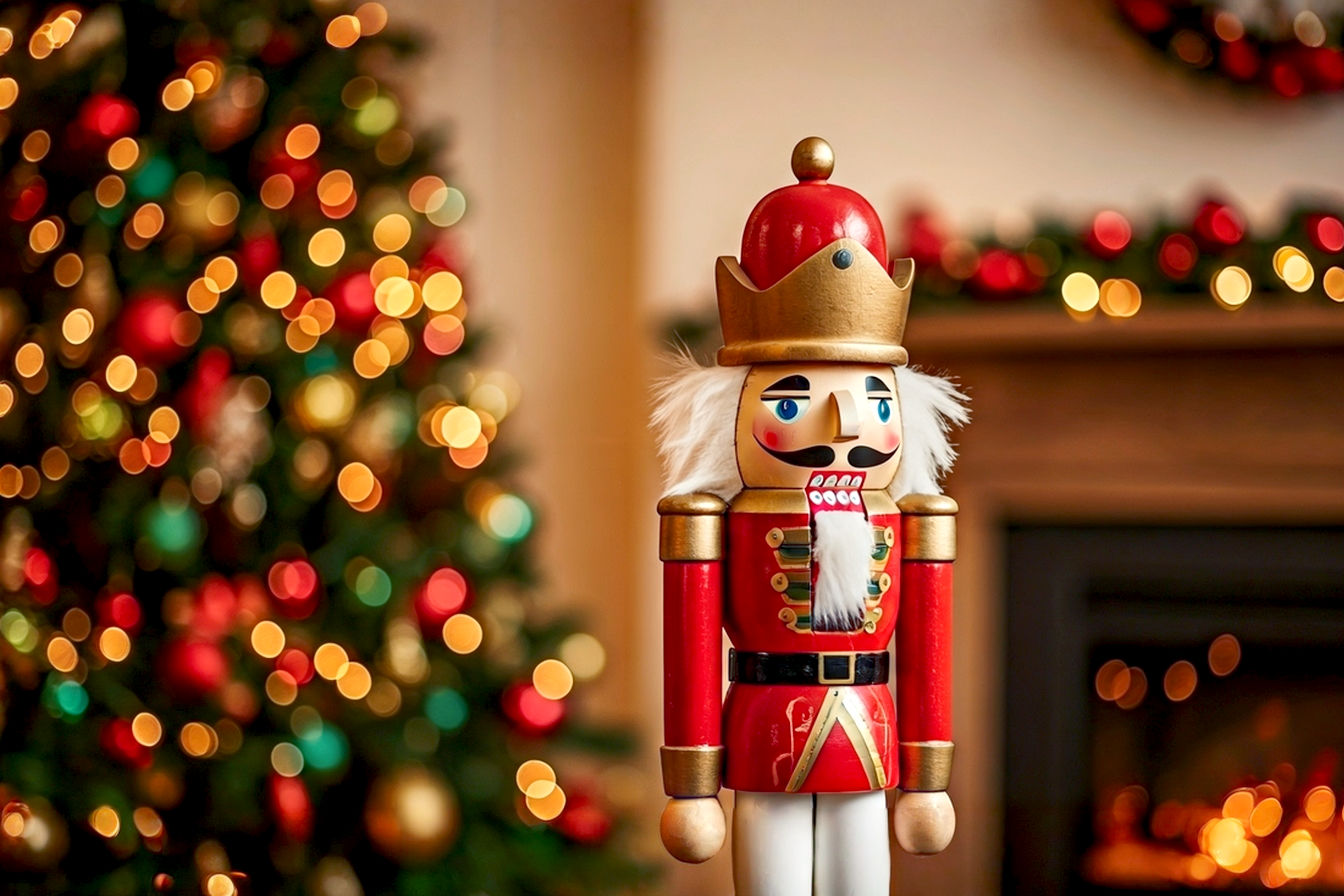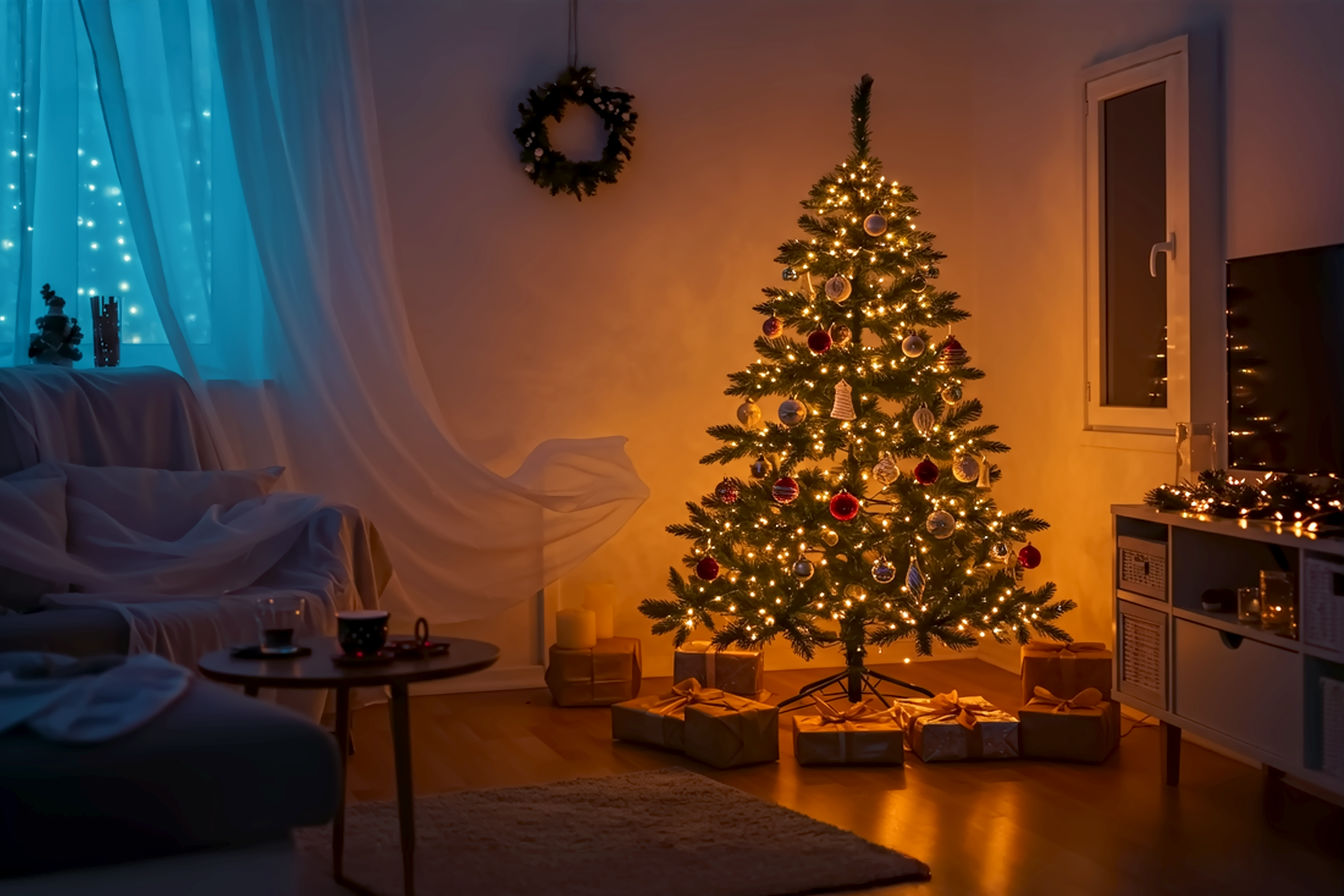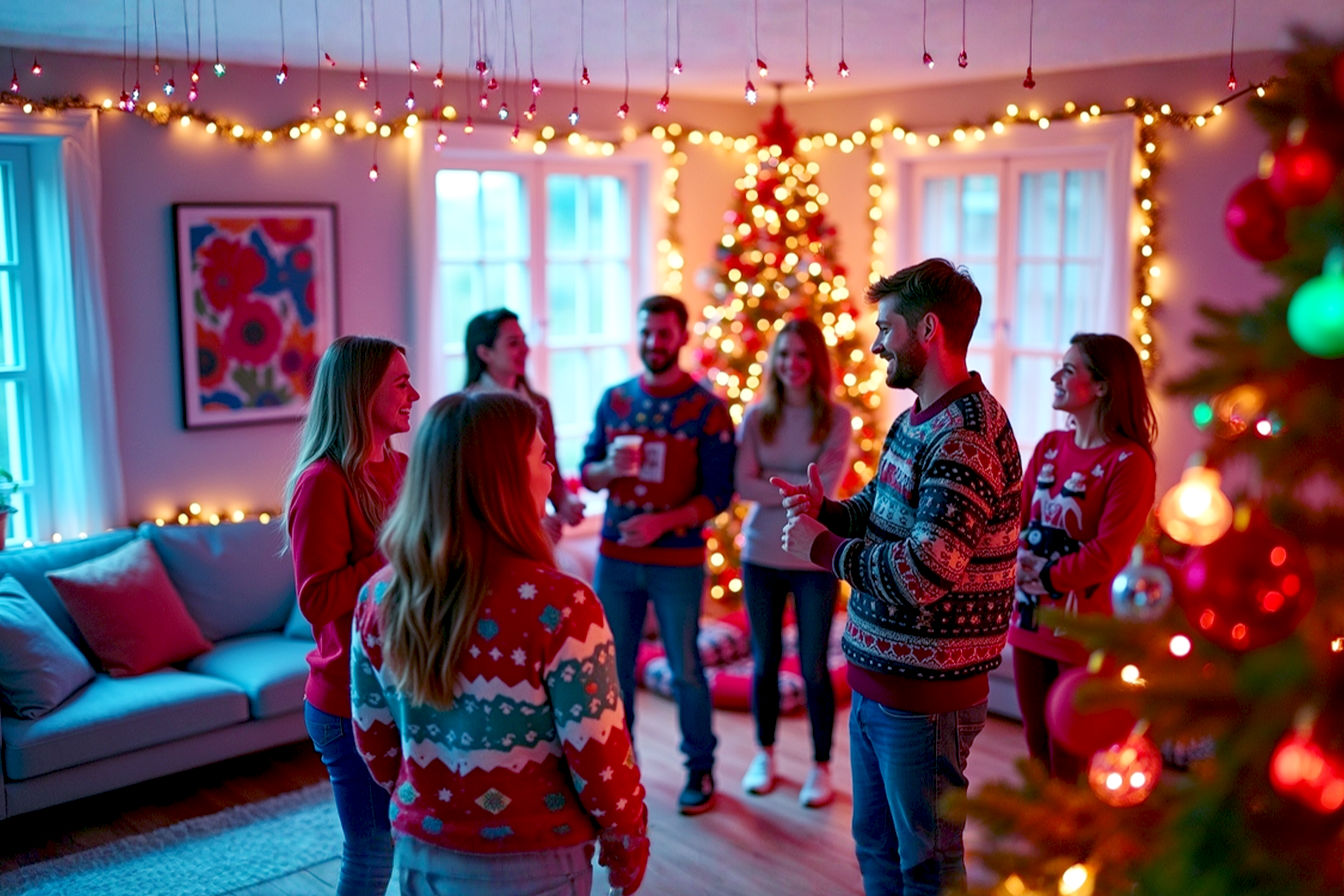This post may contain affiliate links. If you make a purchase through these links, we may earn a commission at no additional cost to you.
The holiday season brings a unique kind of magic, and for many, that magic is deeply intertwined with the jolly figure of Santa Claus. Beyond the presents and carols, there’s a special joy in collecting decorative Santas, transforming your home into a festive wonderland. These aren’t just ornaments; they’re miniature works of art, each telling a story, reflecting different cultures, and evoking cherished memories.
This ultimate guide will take you on a delightful journey into the world of Santa collecting. We’ll explore why these figures capture our hearts, delve into the diverse styles and materials you’ll encounter, and show you exactly where to find those perfect pieces. More than just finding them, we’ll also share expert tips on displaying Santa figures with flair and caring for your treasured collection so it brings joy for years to come. Get ready to discover the art, history, and pure delight of building your very own Santa Claus collection.
Why Collect Decorative Santas?
Collecting decorative Santas is more than just gathering figurines; it’s an engaging hobby that connects us to history, art, and the very spirit of the holidays. There are many reasons why people fall in love with this particular pursuit, from the historical richness to the sheer personal delight.
A Journey Through History and Culture
Each decorative Santa often embodies a piece of history or a cultural narrative. The figure of Santa Claus, as we know him today, has evolved over centuries, drawing inspiration from various traditions like the Dutch Sinterklaas, the English Father Christmas, and even ancient Germanic folklore. When you collect Santas, you’re not just acquiring an object; you’re bringing home a representation of these rich historical threads. For example, a Victorian Santa might feature a long, fur-trimmed robe and a serious expression, reflecting a 19th-century interpretation, while a Coca-Cola Santa embodies the more modern, jolly image popularized in the 20th century. Understanding these origins adds depth and meaning to your collection, making each piece a mini history lesson.
The Allure of Craftsmanship and Artistry
Many decorative Santas are true works of art, showcasing incredible craftsmanship and artistic detail. From the intricate brushstrokes on a hand-painted ceramic figure to the delicate carving of a wooden Santa, the skill involved can be breathtaking. Collectors often appreciate the unique vision of an artist, the way they capture Santa’s expression, the texture of his suit, or the tiny accessories he carries. This focus on artistry elevates the hobby beyond simple accumulation. You’re curating a gallery of diverse artistic interpretations, each piece reflecting the talent and passion of its creator. It’s this artistic appeal that makes hand-painted Santas so desirable.
Creating Cherished Holiday Traditions
For many families, a Santa collection becomes an integral part of their annual holiday traditions. Unpacking the Santas each year can be a ritual in itself, bringing back memories of where each piece was found or who gave it as a gift. New additions mark milestones, and the evolving display becomes a visual chronicle of family Christmases. Children (and adults!) often look forward to seeing their favorite Santa figures reappear, creating a sense of continuity and nostalgia. This tradition-building aspect makes Santa Claus collection a deeply personal and meaningful endeavor.
Investment and Value Potential
While most collectors start for the sheer joy of it, some decorative Santas can also hold or even increase in value over time. Limited edition pieces, figures by renowned artists, or vintage items in excellent condition can become quite sought after. For instance, early Department 56 pieces or retired Jim Shore designs might command higher prices in the secondary market. Understanding factors like rarity, artist reputation, condition, and original production numbers can help you identify pieces with potential investment value. However, it’s important to remember that collecting should primarily be about passion. Any financial gain is usually a bonus, not the main goal.
Understanding the World of Decorative Santas
Before you dive into the exciting hunt, it helps to understand the vast and varied landscape of decorative Santas. They come in countless forms, each with its own charm and characteristics. Knowing what to look for will make your collecting journey more rewarding.
Diverse Styles and Interpretations
Santa isn’t just one look; he’s a chameleon of holiday cheer! His appearance changes dramatically depending on the artist, the era, and the cultural influences. Recognizing these styles will help you define your own collection’s focus.
Traditional & Classic Santas
These are the Santas most people picture: the jolly, red-suited figure with a long white beard.
- Coca-Cola Santa: This iconic image, largely defined by Haddon Sundblom’s illustrations for The Coca-Cola Company starting in the 1930s, depicts a warm, friendly Santa with rosy cheeks, a big belly, and a vibrant red suit. These figures often evoke a sense of nostalgic Americana.
- Victorian Santa: Drawing from 19th-century European traditions, these Santas often wear longer, more elaborate robes, sometimes in colors other than red (like green or blue), and might carry a staff or a basket of toys. Their expressions can be more solemn or dignified, reflecting an older, more mystical interpretation of the gift-giver.
Folk Art & Whimsical Santas
These styles embrace a more artistic, often handcrafted feel, moving away from strict realism.
- Jim Shore: Known for his “Heartwood Creek” collection, Jim Shore’s Santas feature intricate patterns inspired by quilting, rosemaling, and other folk art traditions. They often have a carved wood look, even if made from resin, and frequently depict Santa with various animals or in different global guises. His distinctive style makes his pieces instantly recognizable and highly collectible.
- Department 56: While famous for their village collections, Department 56 also produces many Santa figures that often fit into their themed worlds, from whimsical “Possible Dreams” Santas (made with “Clothtique” fabric over resin, giving them a soft, flowing appearance) to more traditional interpretations designed to complement their village scenes. These often have a narrative quality, showing Santa in action or interacting with other characters.
Global & Cultural Santas
Santa’s identity isn’t limited to Western interpretations. Many cultures have their own versions of a gift-giving figure, and these are often represented in decorative Santas.
- Père Noël (France): Often depicted as a slender figure in a long cloak, sometimes accompanied by Père Fouettard (Father Whipper), who handles naughty children.
- Sinterklaas (Netherlands): This figure is based on Saint Nicholas, arriving by steamboat with his white horse and Zwarte Piet (Black Pete) helpers. Figures often show him in bishop’s robes with a miter and staff.
- Father Christmas (United Kingdom): Traditionally a more ancient, often green-robed figure associated with feasting and good cheer, distinct from the American Santa Claus until the two figures merged in popular culture.
- Ded Moroz (Russia): Grandfather Frost, a tall, slender figure in a blue or silver robe, often accompanied by his granddaughter Snegurochka (Snow Maiden).
Modern & Contemporary Santas
These Santas often feature sleek designs, minimalist aesthetics, or unexpected materials. They might incorporate modern fashion trends or abstract interpretations, appealing to those who prefer a less traditional holiday look. You might find Santas made from recycled materials, with bold color palettes, or even abstract sculptural forms.
Common Materials and Their Characteristics
The material a Santa is made from significantly impacts its appearance, durability, and feel. Understanding these differences is key to appreciating and caring for your collection.
Resin and Polyresin
- Description: Resin is a synthetic polymer, often mixed with other materials to create polyresin. It’s a popular choice for decorative figures because it can be molded into incredibly intricate shapes and details.
- Characteristics:
- Durability: Generally quite durable and resistant to breakage compared to ceramic or glass, though they can still chip or crack if dropped.
- Detail: Excellent for capturing fine details, textures, and expressions. This is why many highly detailed Santas, including those from Jim Shore, are made from resin.
- Weight: Can be quite heavy, giving a substantial feel.
- Finish: Can be painted to mimic other materials like wood or ceramic, or given a smooth, glossy, or matte finish.
- Care: Easy to clean with a soft, damp cloth. Avoid harsh chemicals.
Ceramic and Porcelain
- Description: Ceramic refers to objects made from clay and hardened by heat. Porcelain is a specific type of ceramic, known for its fine, translucent quality and often delicate nature.
- Characteristics:
- Fragility: More fragile than resin; prone to chipping and breaking if dropped.
- Fine Detail: Capable of very fine, smooth details and vibrant, glossy glazes.
- Aesthetics: Often have a classic, elegant appearance.
- Weight: Can vary from lightweight to substantial.
- Care: Handle with extreme care. Dust with a soft brush or dry cloth. For deeper cleaning, a very slightly damp cloth can be used, but avoid submerging or using abrasive cleaners.
Wood
- Description: Santas carved from various types of wood, often hand-painted or left with a natural finish.
- Characteristics:
- Rustic Appeal: Offers a warm, natural, and often rustic aesthetic.
- Uniqueness: Hand-carved pieces are unique, showing the individual skill of the artisan.
- Durability: Generally durable, but can be susceptible to scratches, dents, and moisture damage.
- Weight: Varies depending on the type of wood and size.
- Care: Dust with a soft, dry cloth. Avoid excessive moisture. Wood can be sensitive to extreme temperature and humidity changes, which might cause cracking.
Fabric and Mixed Media
- Description: Santas made primarily from fabric, often stuffed, or a combination of fabric with other materials like resin (for faces and hands), wire armatures, or small accessories.
- Characteristics:
- Softness & Texture: Offer a tactile, soft quality that differs from hard materials.
- Expressiveness: Fabric can be draped and shaped to create dynamic poses and flowing garments, as seen in Department 56’s “Clothtique” Santas.
- Variety: Can incorporate a wide range of embellishments like faux fur, glitter, bells, and miniature props.
- Fragility: Can be delicate, especially if they have elaborate costumes or small, attached pieces. Fabric can stain or fray.
- Care: Gentle dusting with a soft brush or lint roller. Spot clean fabric parts carefully if necessary. Avoid getting them wet.
Glass
- Description: Primarily refers to glass ornaments, but also includes some freestanding glass figures.
- Characteristics:
- Delicacy: Extremely fragile and prone to shattering.
- Luminosity: Glass catches and reflects light beautifully, adding sparkle to a display.
- Detail: Can be hand-blown, painted, or glittered with intricate designs.
- Care: Handle with extreme care. Dust with a very soft, dry cloth or a gentle feather duster. Store very carefully.
Identifying Notable Artists and Brands
Certain artists and brands have become synonymous with high-quality or distinctive decorative Santas. Knowing these names can guide your search and help you identify valuable pieces.
Jim Shore Heartwood Creek
- Signature Style: Features a unique blend of traditional folk art motifs (like quilting patterns, rosemaling, and patchwork) with classic Santa imagery. His pieces often have a hand-carved, wooden look, even when made from resin.
- Collectibility: Highly collectible due to his distinctive style and the emotional appeal of his designs. Many collectors focus exclusively on his work.
Department 56
- Signature Style: While best known for their elaborate Christmas villages, Department 56 produces a wide range of Santa figures, including the popular “Possible Dreams” Clothtique Santas. These feature fabric costumes draped over resin bodies, giving them a soft, flowing, and very expressive appearance.
- Collectibility: “Possible Dreams” Santas are particularly sought after for their dynamic poses and realistic fabric details. Other Department 56 Santas are popular for complementing their village scenes.
Christopher Radko
- Signature Style: Primarily known for exquisite hand-blown glass ornaments, Christopher Radko also produces some larger glass Santa figures. His work is characterized by vibrant colors, intricate details, and a classic, often nostalgic, aesthetic.
- Collectibility: Radko ornaments and figures are considered premium collectibles, valued for their artistry and quality.
Local Artisans and Independent Makers
Don’t overlook the incredible talent of local and independent artists! These Santas are often one-of-a-kind or produced in very limited quantities, offering a unique charm that mass-produced items can’t match. You might find them at craft fairs, art markets, or small boutiques. Supporting these makers also means investing in unique craftsmanship and often a direct connection to the artist’s story.
The Hunt Begins: Finding Your Perfect Santas
Now that you understand the different types and styles, it’s time for the exciting part: the hunt! Finding decorative Santas can be a thrilling adventure, whether you’re seeking brand-new pieces or vintage treasures.
Where to Discover New and Vintage Santas
Your search for the perfect Santa can take you to a variety of places, each offering a different experience and selection.
Specialty Christmas Shops and Boutiques
- Pros: These stores are a prime source for new, high-quality Santas from popular brands like Jim Shore and Department 56. They often have dedicated displays, knowledgeable staff, and the latest collections. You’ll find well-curated selections and often exclusive pieces.
- Cons: Prices are typically retail, so you won’t find many bargains here.
Antique Malls and Flea Markets
- Pros: These are treasure troves for vintage Santa figures. You might discover unique, older pieces with character and history that you won’t find anywhere else. Prices can be negotiable, offering opportunities for great deals. It’s a fantastic place to find identifying valuable Santas if you know what to look for.
- Cons: The selection is unpredictable, and condition can vary widely. You’ll need a keen eye and patience to sort through items. Authentication might be difficult.
Online Marketplaces (eBay, Etsy, Dedicated Collector Sites)
- Pros: Offer the widest selection, including rare and retired pieces from around the world. You can search specifically for Santa collector’s guide recommended pieces, specific artists, or styles. Etsy is excellent for handcrafted and artisan Santas. Dedicated collector forums or Facebook groups can also facilitate trades and sales.
- Cons: You can’t physically inspect the item before buying, so rely heavily on detailed photos and seller descriptions. Shipping costs can add up, and there’s a risk of misrepresentation or damage during transit. Always check seller ratings and return policies.
Estate Sales and Auctions
- Pros: Can be excellent sources for entire collections or high-value individual pieces at potentially lower prices than retail. When someone is liquidating a lifetime collection, you might find rare or unique items.
- Cons: Requires quick decision-making and often involves bidding. You might need to be present physically, and there’s no guarantee of finding what you want. Researching items beforehand is crucial.
Craft Fairs and Artisan Markets
- Pros: Perfect for finding unique, hand-painted Santas and folk art pieces directly from the creators. You can often learn about the artist’s inspiration and process, making the piece even more special. These are great places to support independent artists.
- Cons: Selection is limited to the artists present, and prices reflect the handcrafted nature of the items.
What to Look For: Quality, Condition, and Authenticity
Once you’ve found a potential new addition, it’s crucial to evaluate it carefully. This step is vital for ensuring your collection’s quality and value.
Assessing Condition: From Mint to Well-Loved
Condition is paramount, especially for vintage or high-value pieces.
- Mint Condition: This means the Santa is in perfect, as-new condition, with no visible flaws, chips, cracks, or fading. It should ideally come with its original packaging and tags. This is the most desirable condition for collectors, especially if you’re considering future value.
- Excellent Condition: Very minor, almost unnoticeable flaws. Perhaps a tiny scuff or a very slight fade in a small area. Still highly desirable.
- Good Condition: Shows some signs of age or light use. There might be small chips, minor paint loss, or slight discoloration. These are still good for display, especially if the flaws aren’t prominent.
- Fair Condition: Noticeable flaws, such as significant chips, cracks, or extensive paint loss. These are typically purchased for their rarity or if they have sentimental value, rather than for pristine display.
- Poor Condition: Heavily damaged, broken, or missing significant parts. Only really suitable for parts, restoration projects, or if extremely rare.
Always inspect the Santa thoroughly: check the base, hands, face, and any accessories for damage. Look for fading, especially on fabric elements, and ensure all original parts are present.
Signs of Quality Craftsmanship
High-quality Santas often stand out due to superior craftsmanship.
- Detail and Precision: Look for crisp, clean lines in painting, intricate sculpting, and well-defined features. Is the beard textured realistically? Are the eyes expressive?
- Material Quality: Does the material feel substantial and well-finished? Is the paint evenly applied without smudges or bubbles? For fabric Santas, is the stitching neat and durable?
- Balance and Stability: Does the figure stand firmly on its own without wobbling? This is important for display and preventing accidental falls.
- Artistic Vision: Does the piece convey a sense of character or a unique artistic interpretation? Even if it’s not a famous artist, a well-executed piece will have a distinct personality.
Verifying Authenticity and Provenance
For more valuable or vintage pieces, verifying authenticity can prevent costly mistakes.
- Artist Signatures/Marks: Many artists and brands include a signature, mark, or sticker on the base of the figure. Research these marks to confirm they match known authentic examples.
- Original Packaging: Original boxes, tags, or certificates of authenticity can significantly increase a Santa’s value and help confirm its origin.
- Provenance: This refers to the history of ownership. If a seller can provide a clear history of where the Santa came from (e.g., “purchased directly from the artist,” “from a known collector’s estate”), it adds to its credibility.
- Research: Use online resources, collector guides, and forums to compare potential purchases with known authentic examples. Look for common counterfeits or reproductions.
Setting a Budget and Smart Collecting Strategies
Collecting can be an expensive hobby if you’re not careful. Having a budget and a clear strategy will help you build your collection wisely and enjoy the process without financial stress.
Starting Small: Building a Foundation
You don’t need to spend a fortune to start.
- Focus on a Theme: Begin by collecting Santas of a specific style (e.g., all wooden Santas), material (e.g., only ceramic), or size. This helps create a cohesive look and prevents overwhelming choices.
- Set a Price Limit: Decide how much you’re willing to spend per Santa. Stick to this limit, especially when starting out. You can always adjust it later as your collection grows and your knowledge expands.
- Quality Over Quantity: It’s often better to have a few high-quality pieces that you truly love than many mediocre ones. These will bring more long-term satisfaction.
The Thrill of the Bargain Hunt
Finding a great deal is one of the most exciting parts of collecting!
- Off-Season Shopping: The best time to buy Christmas decor is after Christmas, when retailers offer deep discounts to clear inventory.
- Thrift Stores & Garage Sales: These can be goldmines for hidden gems at incredibly low prices. Many people donate or sell their holiday decor, unaware of its potential value.
- Negotiate: At flea markets, antique shops, and garage sales, don’t be afraid to politely negotiate the price, especially if you’re buying multiple items.
Prioritizing Rarity vs. Personal Appeal
This is a key decision for any collector.
- Rarity: Some collectors prioritize rare, limited edition, or vintage pieces that are hard to find. These often have higher potential for appreciation in value. This approach requires more research and a willingness to pay higher prices for specific items.
- Personal Appeal: Many collectors simply choose Santas that they love, regardless of their rarity or potential monetary value. This makes the collection deeply personal and ensures that every piece brings genuine joy.
- Balanced Approach: Most collectors find a balance, seeking out pieces they love that also happen to be rare or high-quality. Don’t let the pursuit of “valuable” pieces overshadow the simple pleasure of collecting.
Displaying Your Santa Collection with Style
Once you’ve amassed a charming collection of decorative Santas, the next step is to display them in a way that truly brings out their magic and enhances your holiday decor. Effective display can transform a group of figures into a captivating festive scene.
Creating Impactful Vignettes
A vignette is a small, artfully arranged display that tells a story or highlights a theme. It’s a fantastic way to showcase your Santas without overwhelming a space.
Grouping by Theme, Color, or Style
- Theme: Group Santas that share a common theme. For example, all your “global Santas” could be together, or all your “wood-carved Santas.” You might have a group of Santas with animals, or those depicting Santa delivering gifts.
- Color Palette: If you have Santas with varying color schemes, group them by dominant colors. A display of classic red and white Santas can be stunning, or perhaps a collection of more muted, earthy-toned Santas.
- Style: Keep all your Jim Shore Santas together, or all your Department 56 Clothtique figures. This creates visual cohesion and highlights the unique characteristics of each style.
Incorporating Complementary Decor (Mini Trees, Garland, Lighting)
- Miniature Christmas Trees: Small, tabletop Christmas trees (real or artificial) provide a festive backdrop and can make your Santas look like they’re part of a larger holiday scene. Place them behind or slightly to the side of your figures.
- Garland and Greenery: Drape evergreen garland (real or faux) around your display area. Add pinecones, berries, or even small ornaments to the garland to enhance the festive feel.
- Lighting: Subtle lighting can dramatically enhance your display. Use battery-operated LED string lights or fairy lights woven through garland or around the base of your figures. This adds a warm, magical glow, especially in the evening.
- Faux Snow and Glitter: A sprinkle of faux snow or glitter on the display surface can create a winter wonderland effect, making your Santas pop.
Utilizing Different Heights and Levels
A flat display can look static. Adding varying heights creates visual interest and allows each Santa to be seen clearly.
- Books and Risers: Use stacks of holiday-themed books, small decorative boxes, or purpose-built display risers (often clear acrylic) to elevate some of your Santas.
- Pedestals: Small pedestals or overturned decorative bowls can also serve as risers.
- Tiered Stands: Consider tiered dessert stands or multi-level shelving units to create a dynamic vertical display.
Dedicated Display Areas
For larger collections or to create a focal point, dedicated display areas are ideal.
Curio Cabinets and Display Cases
- Pros: These offer excellent protection from dust, curious hands, and potential damage. Glass doors allow for clear viewing while keeping your precious Santa Claus collection safe. Many cabinets also come with built-in lighting.
- Cons: Can be a significant investment and take up floor space. Ensure the shelves are sturdy enough to hold the weight of your figures.
Mantels and Shelving Units
- Mantels: A classic choice for holiday decor. Arrange Santas along the mantelpiece, perhaps with garland, stockings, and candles. Use varying heights to create visual appeal.
- Shelving Units: Bookcases or open shelving units can be repurposed for Santa displays. Dedicate entire shelves or sections to your collection. Ensure shelves are securely mounted and can bear the weight.
Under the Christmas Tree
- Traditional Spot: This is a beloved spot for many Santas, especially larger figures. They become part of the festive scene around the gifts.
- Considerations: Be mindful of pets and small children who might be tempted to play with the figures. Ensure they are stable and won’t easily tip over.
Entryways and Foyers
- Welcoming Display: Placing a Santa display in your entryway immediately sets a festive tone for guests.
- Visibility: Choose a spot where the Santas will be seen and appreciated upon arrival. A console table or a small cabinet works well.
Lighting Your Collection for Maximum Effect
Lighting is a powerful tool to enhance your display, drawing attention to your favorite pieces and creating a magical ambiance.
Spotlighting Individual Pieces
- Purpose: To highlight a particularly special or intricate Santa.
- Method: Use small, directional LED spotlights (often battery-operated puck lights or clip-on lights) placed strategically to illuminate a single figure. This creates a dramatic effect, emphasizing details and textures.
Ambient Lighting for Overall Warmth
- Purpose: To create a general, inviting glow around your entire display area.
- Method: Incorporate indirect lighting, such as lamps with warm-toned bulbs, or use LED string lights woven through garland or placed behind the display. This adds a cozy, magical atmosphere without being too harsh.
LED String Lights and Fairy Lights
- Versatility: These tiny, often battery-operated lights are incredibly versatile.
- Application: Weave them through garland, wrap them around the base of your Santas, or place them inside glass cloches or jars with a Santa figure for a captivating glow. They come in various colors and can be set to different twinkling patterns.
Safety and Stability: Securing Your Santas
Decorative Santas, especially those made of fragile materials like ceramic or glass, can be easily damaged. Ensuring their safety and stability is crucial.
Preventing Tipping and Falls
- Flat, Stable Surfaces: Always place your Santas on flat, level, and sturdy surfaces that won’t wobble or be easily bumped.
- Museum Putty/Wax: For lighter or top-heavy figures, use a small amount of museum putty (also known as museum wax or earthquake putty) on the base. This non-damaging, reusable adhesive provides a strong grip to the surface, preventing accidental tipping without leaving residue. It’s a simple yet effective way to secure your Santas.
- Weight Distribution: For larger, heavier figures, ensure their weight is evenly distributed on the display surface.
Protecting from Pets and Children
- Out of Reach: The simplest solution is to place fragile or valuable Santas out of reach of small children and curious pets. High shelves, locked curio cabinets, or rooms with limited access are ideal.
- Barriers: For displays on lower surfaces, consider using decorative barriers or fences (like small decorative gates) to create a safe zone around the collection.
- Educate: If children are old enough, teach them about the fragility and value of the Santas, explaining that they are for looking, not touching.
Caring for Your Cherished Santa Collection
Your decorative Santas are more than just holiday decorations; they’re investments of joy and, potentially, monetary value. Proper care ensures they remain beautiful and intact for generations. This involves regular cleaning, careful storage, and thorough documentation.
Cleaning and Maintenance Best Practices
Regular cleaning keeps your Santas looking their best, while knowing how to handle minor damage can save a beloved piece.
Dusting and Gentle Cleaning Methods (Material-Specific)
Dust is the enemy of any collection, dulling finishes and settling into intricate details.
- General Dusting: For most materials, a soft, dry paintbrush (like a clean makeup brush or a dedicated soft-bristled art brush) or a microfibre cloth is ideal for gently dusting crevices and surfaces. Always work gently to avoid scratching or dislodging small parts.
- Resin and Polyresin: These are relatively durable. Dust with a soft, dry cloth or brush. For more stubborn grime, a slightly damp cloth (dampened with plain water, not cleaning solutions) can be used, but ensure it’s almost dry to the touch to avoid leaving water marks. Wipe dry immediately.
- Ceramic and Porcelain: Extremely delicate. Use a very soft, dry brush for dusting. If necessary, a cotton swab very lightly dampened with distilled water can be used for small spots, but avoid any abrasive action. Never submerge ceramic or porcelain figures in water, as unglazed areas can absorb moisture and cause damage.
- Wood: Dust with a soft, dry cloth. Avoid water, as it can warp or damage the wood. If a wooden Santa has a protective finish, you might use a very slightly damp cloth, but dry it immediately. For unfinished wood, stick to dry dusting.
- Fabric and Mixed Media: These require the most delicate touch. Use a lint roller or a soft, dry brush to remove dust and lint. For specific stains on fabric, very carefully spot clean with a tiny amount of mild, diluted fabric cleaner on a cotton swab, testing on an inconspicuous area first. Avoid getting the stuffing wet. Faux fur can be gently fluffed with a soft brush.
- Glass: Use a soft, dry microfibre cloth or a feather duster. For fingerprints, a glass cleaner specifically designed for delicate items can be used sparingly on a soft cloth, then gently wiped. Avoid spraying cleaner directly onto the figure.
Repairing Minor Damage
Small chips or breaks can happen. Knowing basic repair techniques can save a piece.
- Adhesives: For ceramic, porcelain, or resin breaks, use a clear, strong adhesive like super glue (cyanoacrylate) or a two-part epoxy specifically designed for ceramics or plastics. Apply sparingly to one surface, press together firmly, and hold until set. Always follow the adhesive manufacturer’s instructions.
- Paint Touch-Ups: For small paint chips, you can try to match the original color with acrylic paints. Apply with a very fine brush. This is best for display pieces, not necessarily for high-value collectibles where original condition is paramount.
- Professional Restoration: For valuable or intricately damaged pieces, consider consulting a professional conservator specializing in ceramics, wood, or mixed media. They have the expertise and tools to perform seamless repairs.
Proper Storage for Off-Season Protection
The off-season is when most damage occurs. Proper storage is vital for preserving your Santas.
Individual Wrapping and Padding
- Protection: Each Santa figure should be individually wrapped to prevent scratching, chipping, and dust accumulation.
- Materials: Use acid-free tissue paper, bubble wrap, or soft packing peanuts. For delicate pieces, wrap them in tissue paper first, then a layer of bubble wrap.
- Custom Boxes: Consider storing each Santa in its own sturdy box, or use plastic storage containers with dividers. This prevents pieces from shifting and bumping into each other.
Climate-Controlled Environments
- Temperature and Humidity: Store your Santas in a stable, climate-controlled environment. Extreme fluctuations in temperature and humidity can cause materials like wood to crack, fabric to degrade, and paint to peel. Avoid attics, basements, or garages unless they are properly climate-controlled.
- Light Exposure: Store Santas away from direct sunlight or strong artificial light. Prolonged light exposure can cause colors to fade, especially on fabric and painted surfaces.
Organized Storage Solutions
- Labeling: Label each storage box clearly with its contents (e.g., “Dining Room Santas,” “Jim Shore Collection,” “Fragile Glass Santas”). This makes unpacking next season much easier.
- Inventory List: Keep a written or digital inventory of where each Santa is stored.
- Stacking: If stacking boxes, ensure the bottom boxes are sturdy enough to support the weight and that no figures are being crushed.
Documenting Your Collection
A well-documented collection is easier to manage, insure, and appreciate.
Inventorying Your Santas
- Detailed Records: Create a detailed inventory list. For each Santa, record:
- Name/Description: (e.g., “Victorian Santa with Lantern,” “Jim Shore Woodland Santa”)
- Artist/Brand: (e.g., “Department 56,” “Jim Shore,” “Unknown Artisan”)
- Material: (e.g., “Resin,” “Ceramic,” “Wood”)
- Date Acquired:
- Place Acquired: (e.g., “eBay,” “Local Antique Shop,” “Gift from Aunt Jane”)
- Price Paid: (for insurance and value tracking)
- Condition: (e.g., “Mint,” “Good, small chip on hat”)
- Notes: Any unique features, stories, or provenance details.
- Digital vs. Physical: You can use a simple spreadsheet, a dedicated collecting app, or a physical notebook. A digital record is often easier to update and search.
Photography and Provenance Records
- Photographs: Take clear, well-lit photographs of each Santa from multiple angles. Include close-ups of any unique features, signatures, or existing damage. These photos are invaluable for insurance purposes, for identifying pieces, and for sharing your collection.
- Provenance Records: Keep any original receipts, tags, certificates of authenticity, or notes about the Santa’s history. Store these with your inventory list, perhaps in a dedicated binder or digital folder. This helps establish the authenticity and value of your pieces.
Expanding Your Santa Collecting Journey
Once you’ve established your core collection and mastered the basics of finding and displaying, you might find yourself wanting to dive deeper into the world of Santa collecting. There are many avenues to explore for continued enjoyment and growth.
Joining Collector Communities
Connecting with other enthusiasts is one of the most rewarding aspects of any hobby.
- Online Forums and Social Media Groups: Platforms like Facebook host numerous groups dedicated to specific Santa brands (e.g., Jim Shore collectors, Department 56 enthusiasts) or general Christmas decor collecting. These communities are fantastic for:
- Sharing Knowledge: Asking questions, getting advice on identification or care, and learning from experienced collectors.
- Buying, Selling, and Trading: Many groups facilitate direct sales or trades among members, often for rare or retired pieces.
- Inspiration: Seeing how others display their collections can spark new ideas for your own home.
- Local Collector Clubs: Check if there are any local Christmas ornament or Santa collector clubs in your area. These offer opportunities for in-person meetings, show-and-tells, and group outings to antique shops or shows.
Attending Shows and Conventions
For serious collectors, attending specialized shows and conventions can be an unparalleled experience.
- Christmas Collectibles Shows: Larger cities often host annual Christmas or holiday collectibles shows. These events bring together numerous vendors, artists, and sometimes even brand representatives.
- Benefits:
- Vast Selection: Access to a huge variety of Santas, often including rare, vintage, and new releases.
- Direct Interaction: Opportunity to meet artists, ask questions, and learn about the craftsmanship directly.
- Networking: Connect with other collectors face-to-face.
- Expert Appraisals: Some shows offer appraisal services, where you can get an expert opinion on the value of your pieces.
Exploring Related Collectibles (e.g., Mrs. Claus, Elves, Reindeer)
Your Santa collection doesn’t have to be limited to just Santa himself! Many collectors expand their focus to include other beloved characters from the North Pole.
- Mrs. Claus: A wonderful companion to any Santa, Mrs. Claus figures often depict her baking, reading, or helping Santa.
- Elves: Santa’s trusty helpers come in countless poses and styles, adding a whimsical touch to any display.
- Reindeer: Figures of reindeer, especially Rudolph and his friends, can create a dynamic scene around your Santas.
- Sleighs and Workshops: Miniature sleighs, workshops, or other North Pole-themed accessories can provide a narrative backdrop for your Santa figures, making your display even more immersive.
- Christmas Villagers: If you collect Department 56 Santas, you might naturally gravitate towards their village pieces to create a complete holiday world.
Expanding your collection in these ways allows for even more creative display opportunities and deepens your engagement with the holiday theme.
The Enduring Magic of a Santa Collection
Collecting decorative Santas is a truly special hobby, one that goes far beyond simply acquiring objects. It’s about curating a personal gallery of artistry, history, and holiday cheer. Each figure you find, whether a meticulously hand-painted ceramic piece or a charming folk art carving, carries its own story and adds to the rich tapestry of your home’s festive decor.
From the thrill of the hunt in antique shops to the careful arrangement of a captivating vignette on your mantel, every step of the collecting journey is filled with joy. You’re not just building a collection; you’re building traditions, preserving memories, and creating a tangible connection to the enduring magic of Christmas. So, embrace the adventure, let your passion guide you, and watch as your Santa Claus collection brings warmth, wonder, and countless smiles to your home for many holiday seasons to come.

